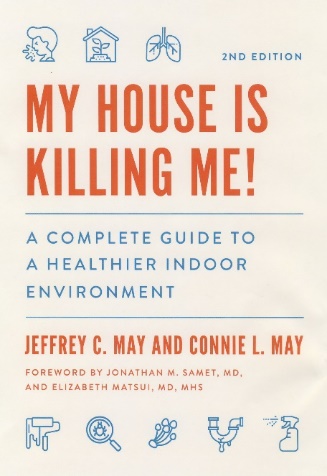Homeowner Newsletter, Summer 2023
©2023 Jeffrey C. May
Elevated moisture levels inside a home can lead to mold growth. Some moisture sources are obvious, like leaking pipes or water intrusion into a basement. In this article I am discussing other sources that may seem less obvious or are just conditions that you are used to having in your home.
The bathroom: Mold growth can grow on the ceiling and walls in a bathroom if moisture from a shower or bath condenses on these surfaces. To reduce such moisture levels, keep the door to the bathroom open and the exhaust fan running for at least an hour after showering. A bathroom exhaust fan is designed to remove odors and not necessarily enough moisture to prevent mold growth, so operate an oscillating fan to create airflow, which will speed up drying. You could also run a stand-up fan to blow air out of the bathroom to an adjacent area. Hang towels in another room to dry or put them in the dryer. As for the mold growth? This is nearly always surface growth and can be wiped away with a mild bleach solution (one part bleach to 16 to 18 parts water) or with any suitable cleaning agent.
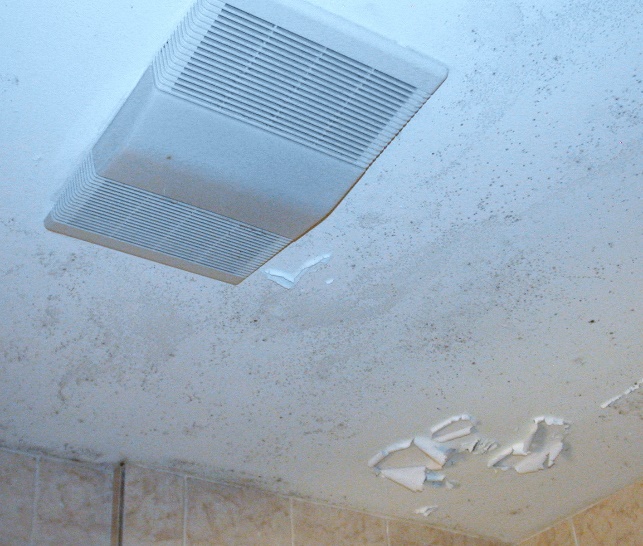
It’s common for water to leak out of tubs if the shower curtains aren’t completely blocking the water flow. Then mold growth can occur on a tile floor, and water can even leak under the flooring and cause damage. A simple solution is to install “shower shields” at the front corners of the tub. These small plastic barriers are usually available at Home Depot and are easy to install.
The kitchen: Cooking produces a lot of moisture, so it’s best to have an exhaust fan that vents to the exterior over your stove. Operate the fan whenever you are cooking or baking.
The laundry: A pileup of lint behind your dryer indicates that the dryer exhaust hose may be leaking or be disconnected. Check outside to be sure that the end of the hose is not clogged with lint or other debris. If a dryer is exhausting into the house or even into a crawlspace or basement, all that moisture and lint will fuel mold growth.
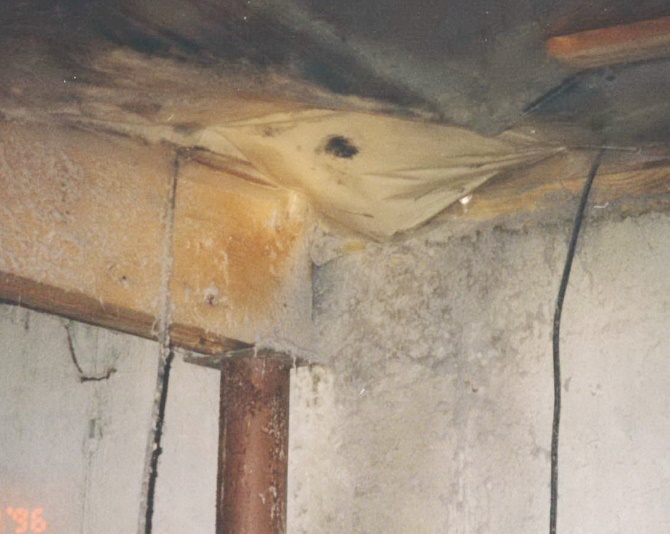
“Secret” leaks: Look under sinks and behind toilets to be sure that the pipes aren’t leaking.
Humidification: If you have a central humidification system or use a portable humidifier, use one or more thermo-hygrometers (usually available at Home Depot) to measure the relative humidity (RH) in the house or the room that’s being humidified. The RH should be no higher than 40% (or even 30% in cold weather). If moisture is condensing on cold surfaces such as on or near windows, then the RH may be too high.
Elevated relative humidity below grade (below ground level): The RH in crawlspaces and unfinished basements should be no higher than 50%. (If you see condensation on cold surfaces such as a well-water tank or cold water pipes, the RH is too high.) Despite what the Building Code may dictate, crawlspaces should be isolated from the exterior (no open vents) and dehumidified in the humid season (in New England generally between mid-April and mid-October). Use a dehumidifier adequate for the space and one that contains an efficient, pleated-media filter rather than just an “insect screen.” Attach the machine to a condensate pump so that it can drain into a sump or sink or to the exterior. Measure the RH with one or two thermo-hygrometers, placed on or near the floor. (Such devices can also be remote-read, which can be useful in a crawlspace.) If the RH exceeds 50%, increase dehumidification.
You can dehumidify or air condition a finished basement in the humid season (you may need to add dehumidification if air conditioning is not sufficient). When you turn the heat on in your house for the fall/winter/early spring, you must also heat your finished basement, whether you are using it or not, with the temperature set at a minimum of 60oF. (If a finished basement doesn’t have insulated walls, the RH should be kept no higher than 50%; otherwise, the RH should be kept under 60%.)
Water intrusion below-grade (below ground level): I can’t tell you how many times people have said to me, “My basement is pretty dry; it only gets damp during a heavy rain.” There should be no water seepage into a basement or crawlspace. How can you avoid such problems? Be sure there are no cracks in your foundation walls. Check outside to be sure that the gutters and downspouts are operating as intended: that gutters are not clogged, resulting in splash on the ground next to the foundation; and that downspouts are directing roof water away from the foundation. Even one downspout that is dumping water next to the house can result in water intrusion in the basement.
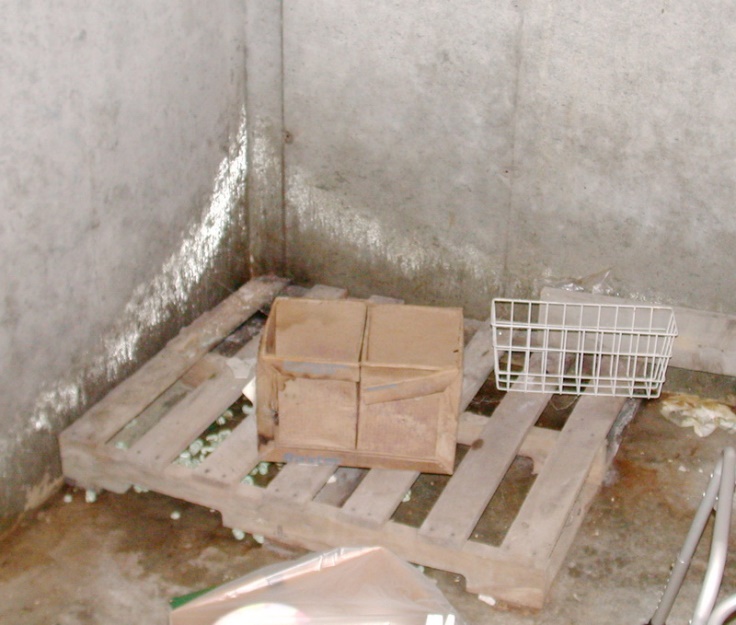
If you walk around the exterior of your home during a heavy rain, you can check to be sure that roof water isn’t pouring down from your gutters rather than flowing into downspouts, and that downspouts are directing water away from the foundation. If your downspouts are inserted into underground piping, be sure that the piping is receiving the downspout water. If not, you may have a drywell that has filled up over time. In that case, you can bury solid 4” PVC piping a few inches under the soil, extend the piping to the edge of a deep landscape furrow or downhill from the house, and insert the downspouts into that piping. Otherwise, you can place downspout blocks under the bottoms of your downspouts to direct the downspout water away from the house.
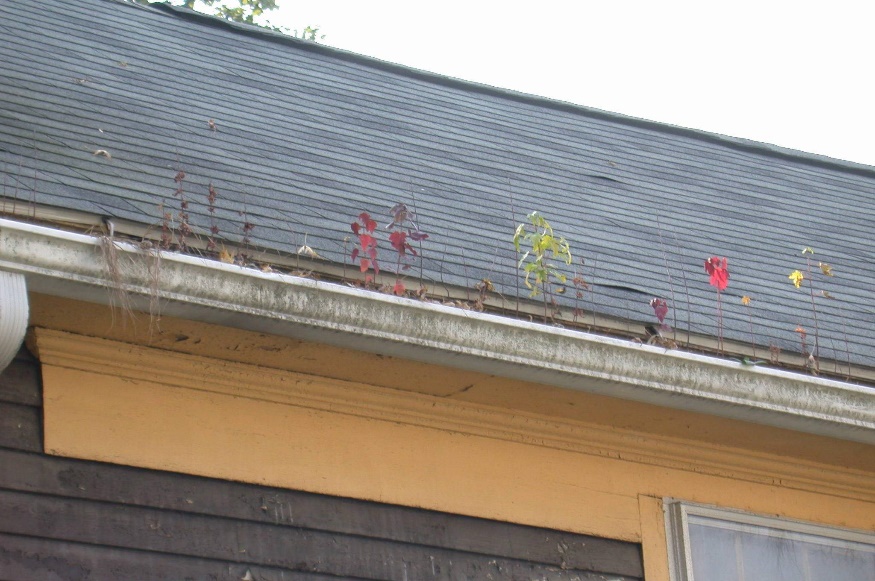
Gutters and downspouts should be inspected and cleaned as needed, but at least once a year.
The second edition of My House is Killing Me contains practical tips for ways to maintain healthier indoor air.
Published in December 2020, the book is available on line.

